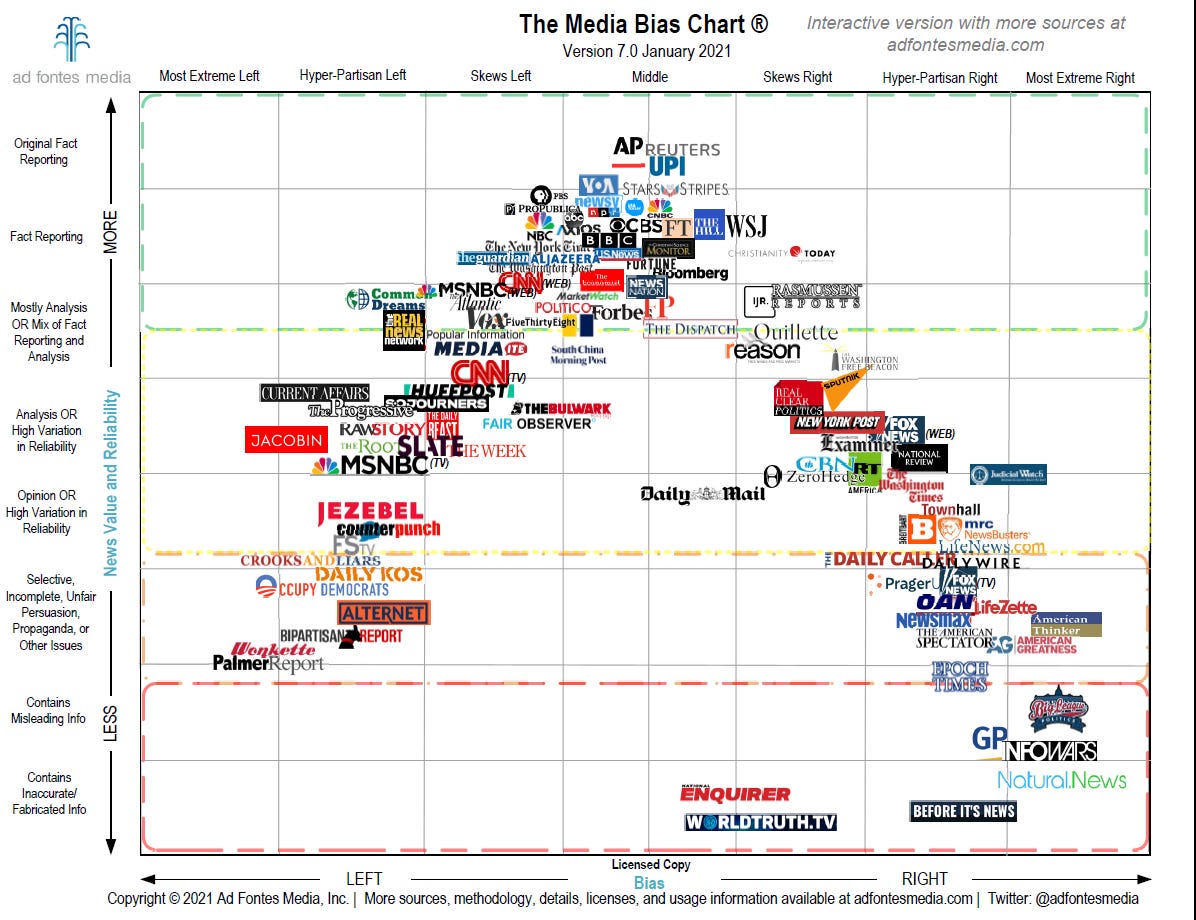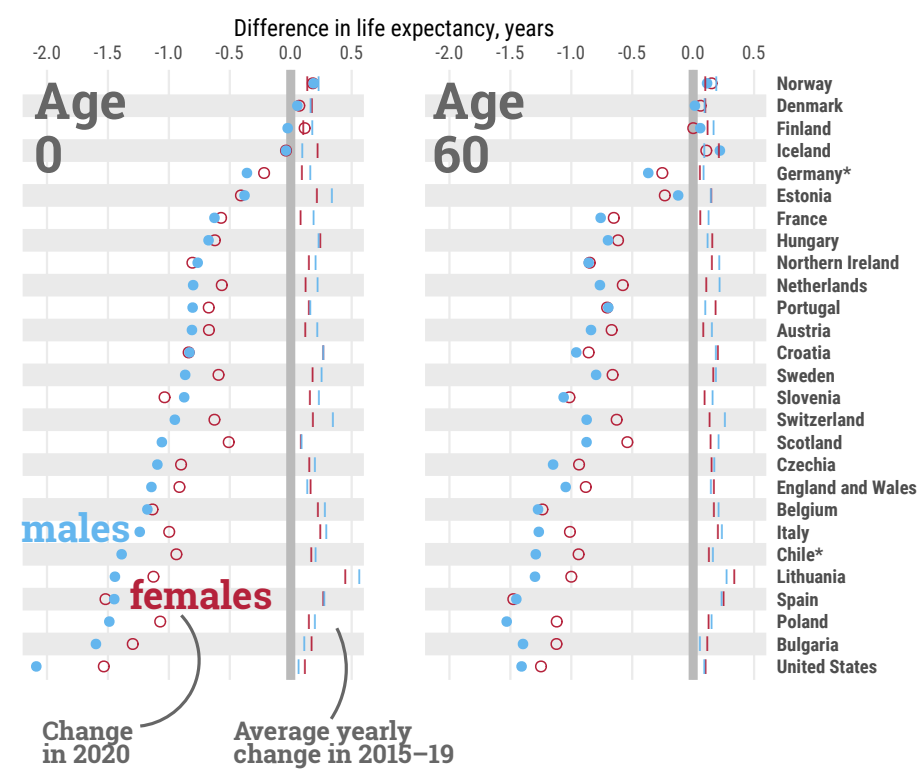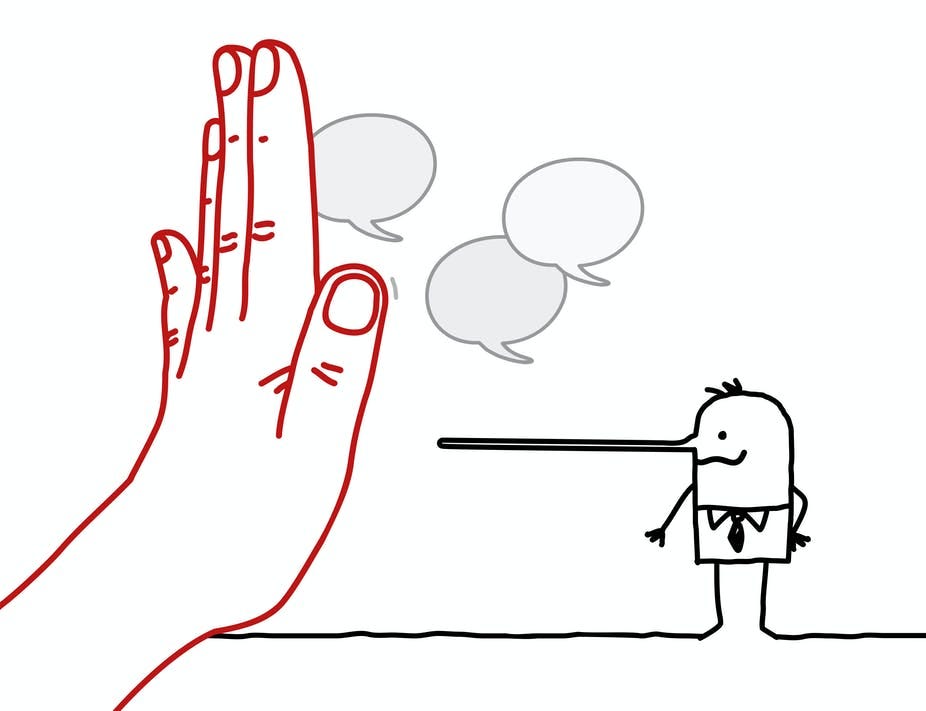Threats, Fact Checks, and Reads #3.19
The Truth About the Anti-Asian Rhetoric, US Disinformation Rating, Covid-19 Research Finds, Vaccine Fact Checks, Tips to Avoid Sharing Fake News, and Recommended Reads
Threats, Fact Checks, and Reads #3.19
from Novel Science
US Disinformation Risk
Covid-19 Research and Updates
Fact Checks
Information Spreads Much Like a Virus
Science & Society Headlines
from Novel Science and published by Rantt Media
Republicans’ Anti-Asian COVID Rhetoric Was A Deliberate Strategy
Excerpt:
“We stayed silent while those who were safe accused us of being too sensitive.
I’ve feared for what happened in Atlanta this week for exactly a year, knowing that like the Latinos massacred in El Paso and the Jewish Americans in Pittsburgh, it would only be a matter of time before it happened to Asians too.
The fears, we would learn, were not unfounded. Between March 19, 2020, and February 28, 2021, there were 3,800 anti-Asian incidents reported, and they didn’t happen in a vacuum. 68% of those reports were of women.
A political strategy guide, in the form of a 57-page memo from the National Republican Senatorial Committee, urged Republican candidates to deflect from the failures and missteps. This leaked in April of 2020.
That was when I knew how this ended.
The guide was a textbook example of the social manipulation that Elizabeth Neumann had warned was sparking violence.
Elizabeth Neumann, the assistant secretary of counterterrorism and threat prevention at the Department of Homeland Security for the Trump administration, lamented the struggle to get American leadership to recognize that by provoking fear as a political tactic, they created the real danger.
When you see the El Paso attacker, his manifesto was citing language and rhetoric that comes from the president’s campaign rallies about an invasion from Mexico and how we’ve got to protect our country.
[Trump] uses rhetoric to scare people. This is a known psychological tactic that if you get people to fear, they tend to follow you to the solution of ‘How are we going to save ourselves?’
And his answer is, ‘It’s me. If you vote for me, I will save you.’ Well, for some people, the way that they think that they need to protect themselves, it’s more than just a vote for a president. It’s ‘let me go kill people.’
—Elizabeth Neumann, assistant secretary of counterterrorism and threat prevention at the Department of Homeland Security for the Trump administration”


US Disinformation Risk
How do I read the map?
The infodemic (an overabundance of information that can leave people unsure what to believe) index shows the likelihood that someone encounters misinformation or disinformation about COVID-19 in a country.
The index consists of two key scores:
1) Infodemic Risk Index (IRI): likelihood that a user receives messages pointing to potentially misleading sources.
This index quantifies if and how users are exposed to circulating information.
2) Dynamic Infodemic Risk Index (Dynamic IRI): the likelihood that a user shares, comments, or interacts with messages that lead to misleading sources.
This index quantifies if and how users interact with circulating information.
The indices range from 0 (Low) to 1 (High):
Low Risk: 0 and 0.25
Low/Medium Risk: 0.26 and 0.5
Medium/High Risk: 0.51 and 0.75
High Risk: 0.76 and 1
The US currently has a high Infodemic Risk Index, especially compared to the developed world.
People should be cautious on social media and know that there is a good chance they will encounter mis/disinformation. Unreliable sources in the US are currently putting out content at a high volume, which likely ties back to the reason for elevated risk.
Bottom Line: People in the US are seeing much fake news right now, probably because outlets publish a lot of misleading and false content. Be cautious while reading. Ask how a story makes you feel, who benefits from that, and if there could be more to a story. All Sides is a great site to compare headlines from the same story to ensure outlets haven’t misled you on a story.
All Sides Balanced Search Results on the Same Story

All Sides balanced search shows titles on a single subject from different outlets, with their political bias. It’s important to note that outlets can be biased but also be reliable. Reliability and bias differ—keep that in mind. Interestingly, outlets are rarely highly biased and reliable. Reliability can exist in both biased and balanced sources.

Note the relationship between reliability and bias.
Being unreliable without bias is exceedingly rare.
Bias drives unreliability; knowing your bias and that of your reading outlet helps you to detect when you’re getting spun.
The New York Times is a reliable newspaper well-known for its meticulous reporting and sourcing of evidence. It also has a left-leaning bias. That means that while they deliver all relevant facts, they have an opinion about them. The outlet also almost always asks the party being criticized or portrayed in an unfavorable light if they would like to comment or give their side of the story. Be wary of sources that never seek comment from parties being criticized. That’s not reporting; that’s propaganda.
Keep in mind that bias (having a preference or opinion on a subject) is not the same as unreliable, which is presenting information misleadingly or dishonestly, like excluding relevant facts, making statements without supportive evidence, or just plain lying. Biased outlets might seem like they would make you happy, but in reality, they make viewers angrier, and overtime these slanted stories push us toward extreme views and can even make us lose touch with reality. As you may have noticed, this then makes compromise and even dialogue impossible.
COVID-19
The US sees the greatest decline in life expectancy worldwide for 2020
from Aburto et al. (2021), a collaboration between the University of Southern Denmark and the University of Oxford

Life expectancy went down everywhere in 2020, except Denmark and Norway, but the US lost the most in life expectancy.
Females in 7 countries and males in 11 saw life expectancy losses so great that the last time we saw a comparable loss was during World War II, or the fall of the Soviet Union for countries involved.
Biggest losses in life expectancy:
Males in the USA, Bulgaria, Poland, and Sweden
Females in the USA and Spain
What Happens When a Person Is Simultaneously Infected with Two Different SARS-CoV-2 Variants?
by Maitreyi Shivkumar for Global Biodefense
Scientists in Brazil recently reported that two people were simultaneously infected with two different variants of SARS-CoV-2, the virus that causes COVID-19.
This co-infection seemed not to affect the severity of patients’ illness, and both recovered without needing to be hospitalized.
A study did not find a link between Covid-19 mRNA vaccines and cancer
from AFP Canada
An article shared thousands of times on social media claims a study from a renowned US cancer center found that Covid-19 mRNA vaccines could be linked to cancer. Researchers did not examine such vaccines, and the article falsely portrays the study's actual findings, the center and medical experts say.
Many people who die of COVID-19 have the virus in their hearts
By Emma Yasinski for Science Magazine
Three-quarters of people who died of COVID-19 harbored the SARS-CoV-2 virus in their hearts…Those people were also more likely than patients without cardiac invasion to experience abnormal heart rhythms before they died.
The finding “paints a really nice picture” of the connection between the virus and heart problems, says Joseph Maleszewski, a cardiovascular pathologist at the Mayo Clinic who was not involved with the study.
The study may help explain why the steroid dexamethasone is so helpful to some patients. The drug was one of the first found to prevent deaths from severe COVID-19.
“We’re starting to understand what COVID-19 does to patients when they have it. What’s not clear is what happens later on.”
Researchers hunt for the cause of rare, COVID-19–linked immune disease in children
By Jennifer Couzin-Frankel for Science Magazine
The immunologic findings dovetail with what doctors have seen: Most children with MIS-C improve rapidly with therapies that suppress the immune system.
from Covid Act Now Research Rundown
A study describes how the D614G mutation in SARS-CoV-2 affects the function of the spike protein. Virus strains carrying the D614G mutation first appeared in summer 2020 and quickly became the dominant circulating strains. This mutation stabilizes the spike protein, which makes it more effective at attaching to human cells; this, in turn, makes the virus more infectious. Read at Science.
B.1.1.7 (new strain of coronavirus) mortality risk
A study analyzes the SARS-CoV-2 variants involved in and outcomes of over 2 million COVID patients and estimates that infection by B.1.1.7 leads to a 61 percent increased risk of death. B.1.1.7 is the variant first identified in the U.K. and has already been shown to be more transmissible. Read at Nature.
Fact Checks
Claim: Homeless people in the United States are among those eligible to receive the $1,400 payments being made under the American Rescue Plan Act of 2021, also called the COVID-19 Stimulus Package.
Verdict: True
Read the full story: Reuters
Claim: A U.S. Food and Drug Administration presentation on monitoring the safety of COVID-19 vaccines shows the vaccines are known to cause harmful side effects — including death.
Verdict: False
Read the full story: FactCheck.org
Claim: California Gov. Gavin Newsom dined with lobbyists at a Napa Valley restaurant in November 2020 during the COVID pandemic and was photographed without a protective mask while away from the table.
Verdict: True
Read the full story: Snopes
Claim: Russian Embassy Tweeted from its US-based account: “Seven years passed since the people of #Crimea stood against coup d’etat in #Ukraine. Hundreds of thousands of Crimeans took part in a referendum to protect their home and further choice – to come back to @Russia”
Verdict: False
Most countries do not recognize the legitimacy of either Russia’s claim to Crimea or the 2014 referendum that Russia organized. The United Nations General Assembly declared both the referendum and Crimea’s new status as part of Russia invalid in March of 2014.
from Polygraph
Nearly everything about the tweet is false. That includes misleading photos, which show celebrating crowds but no Russian soldiers. In fact, the Russian military played a crucial role in occupying key government buildings and military bases around the peninsula, allowing Russia’s proxies in the Crimean parliament to organize the so-called referendum splitting the peninsula from Ukraine.
Initially, the Russian forces wore no insignia, and President Vladimir Putin denied the presence of Russian troops in Crimea, despite the fact that these forces were obviously wearing Russian uniforms and using Russian equipment and vehicles. Later, Putin admitted they were Russian military personnel.
The next red flag in the tweet is its reference to “Crimeans,” as though they are a specific nationality. In fact, the population of Crimea is mixed: a majority is ethnic Russian but more than 30 percent are Ukrainian or Crimean Tatar.
The Crimean Tatars, whom Soviet dictator Josef Stalin deported en masse to Central Asia in 1944 and who comprised nearly 13 percent of the peninsula’s total population at the time of the 2014 annexation, boycotted the Russian-orchestrated “referendum.”
Information Spreads Much Like a Virus

How to avoid becoming a misinformation superspreader
by H. Colleen Sinclair for the Conversation and StopFake
Educate yourself
Recognize your vulnerabilities
Consider the source
Take a pause
Be aware of your emotions
If you see something, say something
If you see someone else stand up, stand up with them
Disinformation Research
How U.S. election disinfo fueled falsehoods across the Middle East
by Simin Kargar and Zarine Kharazian for the Digital Forensics Lab
Pro-Saudi and anti-Iranian government voices feared the loss of an ally in the White House, launching Twitter campaigns to resurrect an old controversy about former Secretary of State Hillary Clinton’s emails and preemptively amplify messages of electoral fraud on the part of then-candidate Joe Biden.
These campaigns illustrate the synergies between U.S. domestic and foreign disinformation ecosystems.
How to Debunk Misinformation about COVID, Vaccines, and Masks
Kathleen Hall Jamieson, director of Annenberg Public Policy Center and co-founder of FactCheck.org
We each have more power to be a science communicator than we realize
How a racialized disinformation campaign ties itself to The 1619 Project
by Brandi Collins-Dexter and Joan Donovan | Harvard Kennedy School’s Shorenstein Center and MIT
Our research reveals that the popularity of “1776” owes in part to keyword squatting—a tactic by which right-wing media have dominated the keywords “1619” and “critical race theory” and enabled a racialized disinformation campaign, waged by Trump and his acolytes, against Black civil rights gains.
According to our analysis, right-wing media wrote nearly three times as frequently about “1619” as the left-wing media did.
Similarly, between September 2020 and February 2021, right-wing media covered “critical race theory” twice as frequently as left-wing media.
This asymmetrical coverage indicates keyword squatting, a networked propaganda strategy that ensures the counter viewpoint is steadfastly tethered to these keywords across a range of platforms.
Keyword squatting—defined by the Media Manipulation Casebook
by Rachael Dean Wilson for the Alliance for Securing Democracy
An analysis of messaging from China’s diplomats, state-backed media, and leaders of the Chinese Communist Party (CCP) demonstrates that Beijing repeatedly uses narratives, angles, and comparisons that serve to change perceptions about China’s autocracy and the United States’ democracy—to China’s advantage.
According to Anne-Marie Brady, Xi’s communications efforts aim to “influence international perceptions about China, shape international debates about the Chinese government and strengthen management over Chinese-language public sphere.”
For a positive message to be most effective, it is usually accompanied by a negative message, creating a compelling contrast between two options.
The four messaging pillars, which borrow heavily from Russian methods:
Pillar One: Promoting China’s Culture and Competence
Pillar Two: Boosting Authoritarianism by Denigrating Democracy
Pillar Three: Co-opting the Legitimacy of Democratic Language
Pillar Four: Creating the Appearance of Moral Equivalence
Disinformation goes to Hollywood: four lessons from journalism
by Whitney Phillips and Claire Wardle for First Draft
Science & Society Headlines
by Daniel Merino, originally published in The Conversation
Tens of millions of people across the U.S. have received a coronavirus vaccine. So far, the majority of doses have been either the Moderna or Pfizer vaccine, both of which use mRNA to generate an immune response. These gene-based vaccines have been in the works for decades, but this is the first time they have been used widely in people.
mRNA vaccines are proving to be more effective than anyone had hoped, but as with any new medical advancement, people have a lot of questions. How do they work? Are they safe? Do I really need two shots? Why do they need to be kept so cold? And will this be the vaccine technology of the future? Below, we highlight five articles from The Conversation that will help answer your questions about mRNA vaccines.
Russia recalls its U.S. ambassador for consultations after Biden comment on Putin
by Reuters Staff
Russia on Wednesday called its ambassador to the United States back to Moscow for consultations on the future of U.S.-Russia ties after U.S. President Joe Biden said Vladimir Putin would “pay a price” for alleged election meddling.
Biden made his comments after a U.S. intelligence report supported longstanding allegations that Putin was behind Moscow’s election interference in the United States, an accusation Russia called baseless.
from Science
The decision this week by more than 20 European countries to temporarily stop using AstraZeneca’s COVID-19 vaccine has opened a rift between vaccine safety experts, who say the cases of serious clotting and bleeding that triggered the pause are alarming and unusual, and public health officials concerned that the immunization pause on a continent in the grip of the pandemic’s third wave could take a heavy toll.
One Year: How COVID's Toll Compares With Other Causes of Death
from Kaiser Health News
Covid has become the country’s third-leading cause of death and could be on its way to outpacing cancer.
Five-Day Course of Oral Antiviral Appears to Stop SARS-CoV-2 in Its Tracks
from Medscape
A single pill of the investigational drug molnupiravir taken twice a day for 5 days eliminated SARS-CoV-2 from the nasopharynx of 49 participants.
What Is Fluvoxamine? OCD Drug Could Be Used to Treat COVID
from Newsweek
An anti-depressant medication used to treat obsessive-compulsive disorder (OCD) may also effectively treat some COVID cases, scientists say.
Subscribe | editor@novel-science.com | Twitter | Hoaxlines | NOVEL SCIENCE










